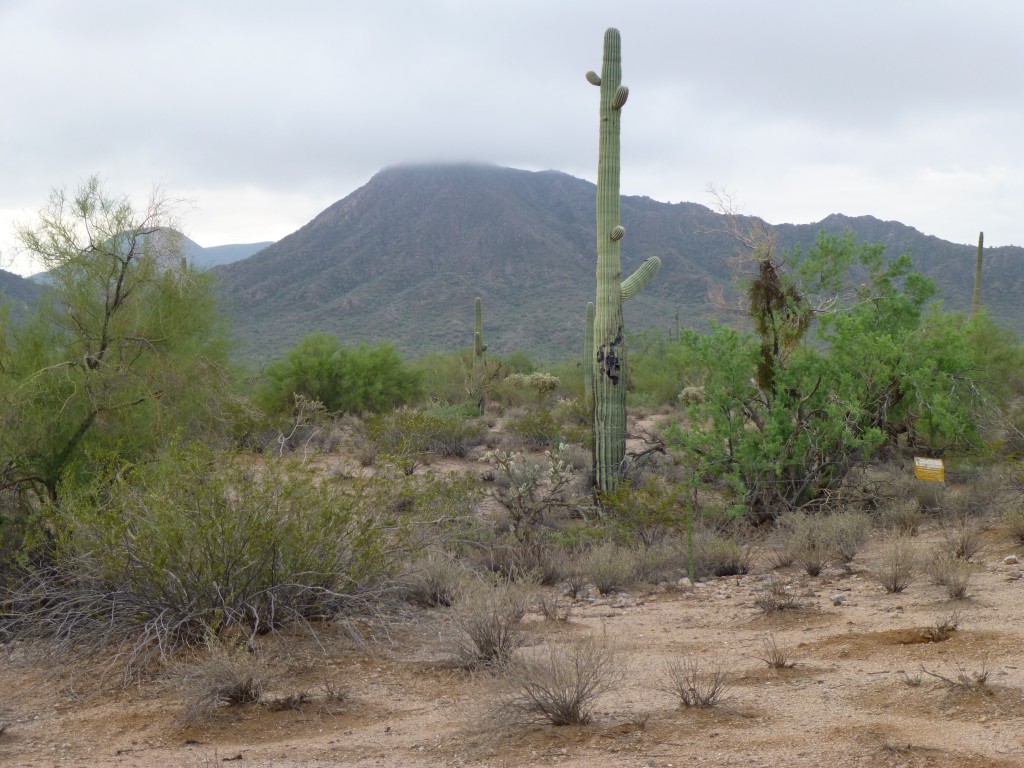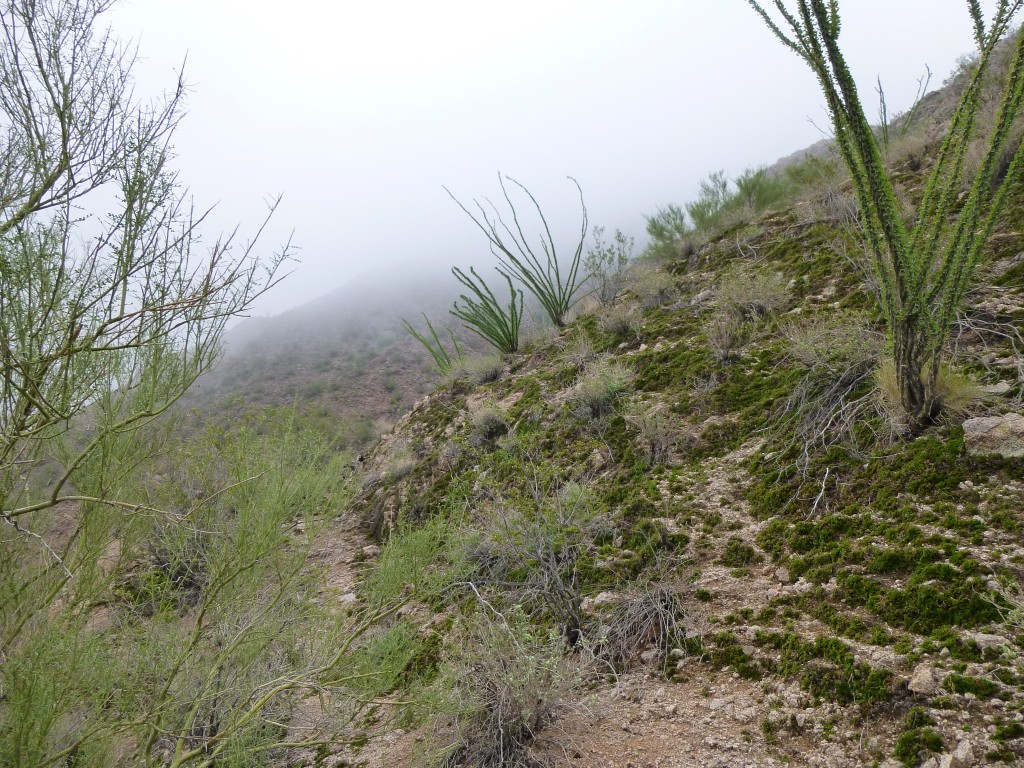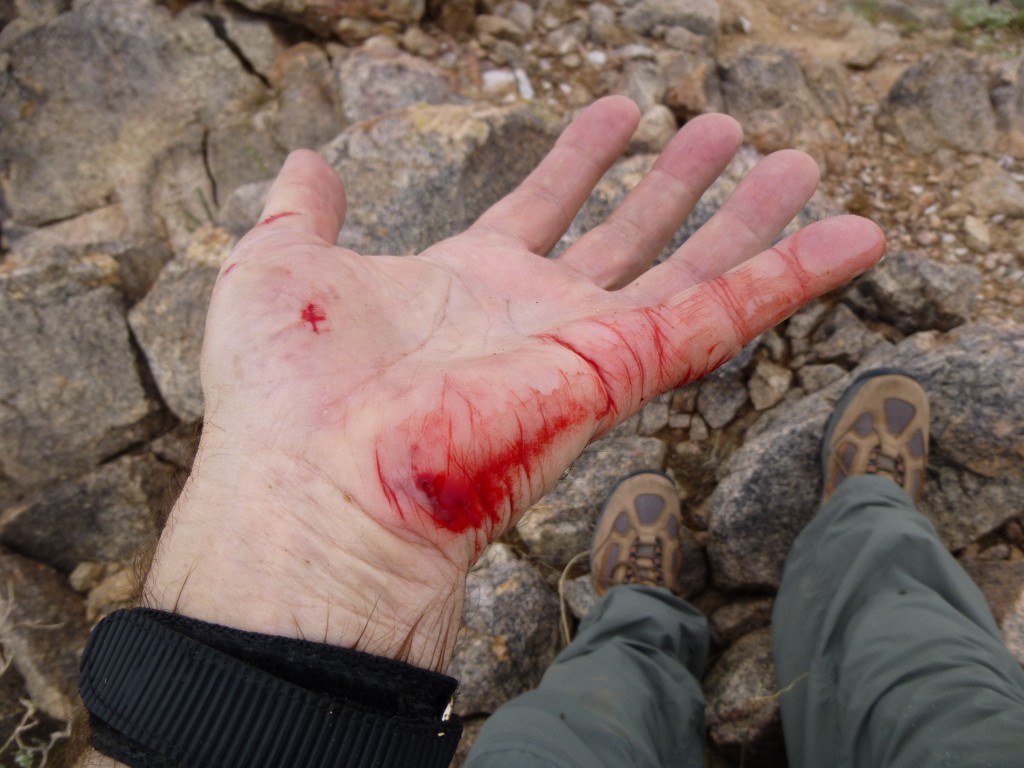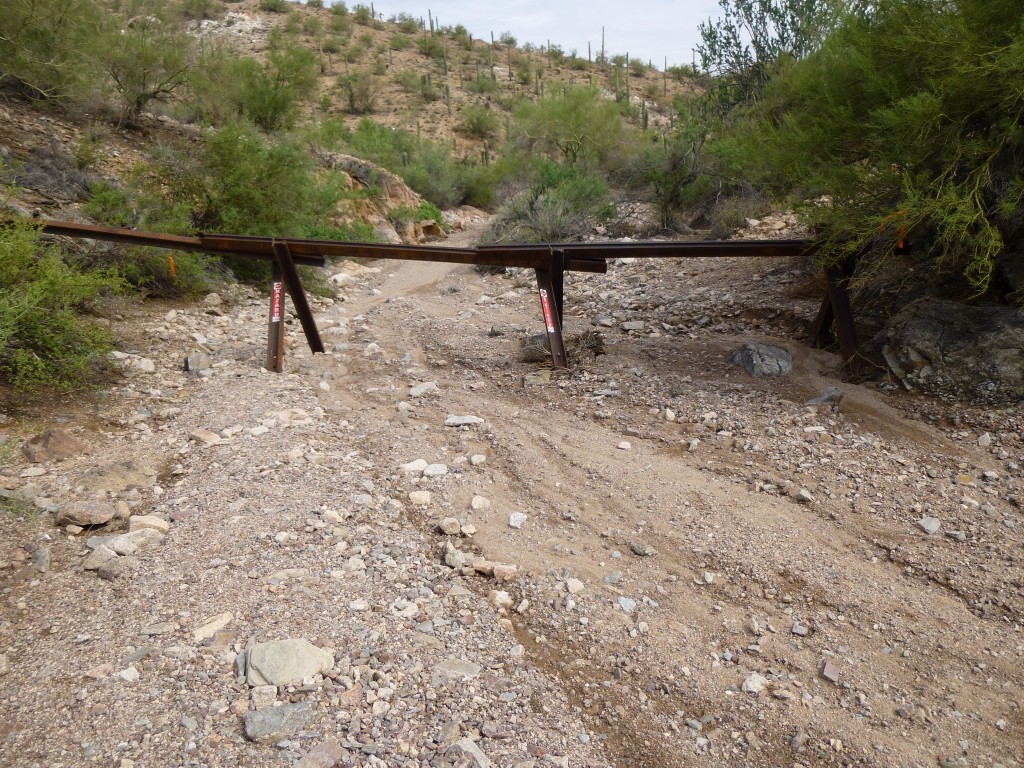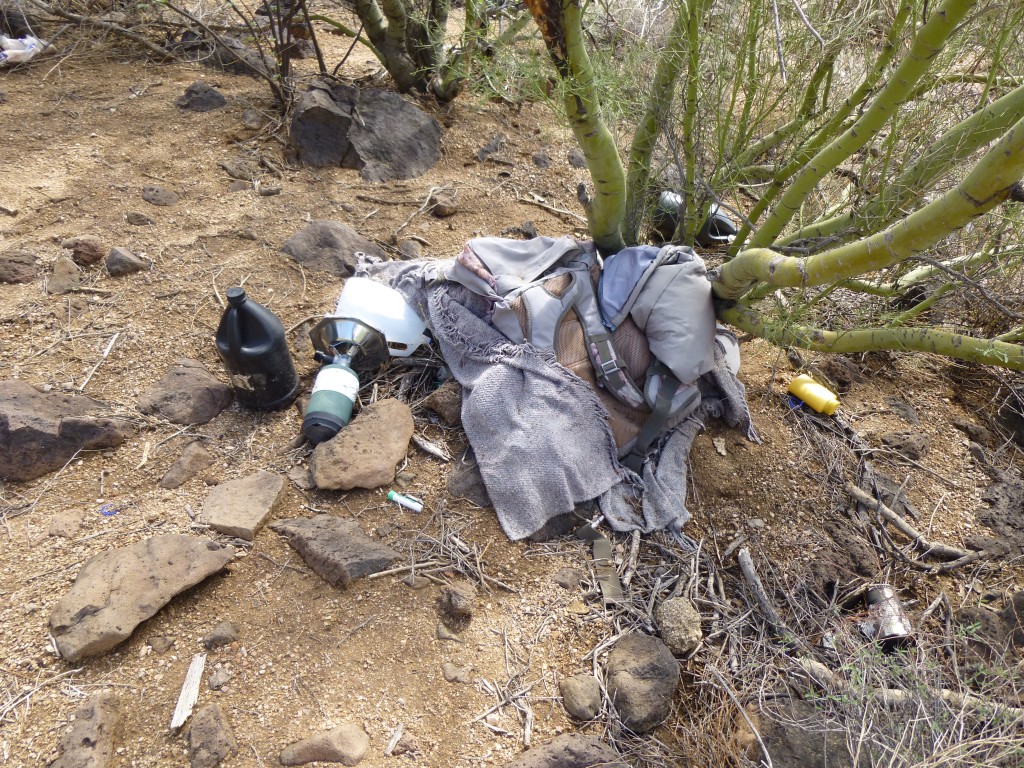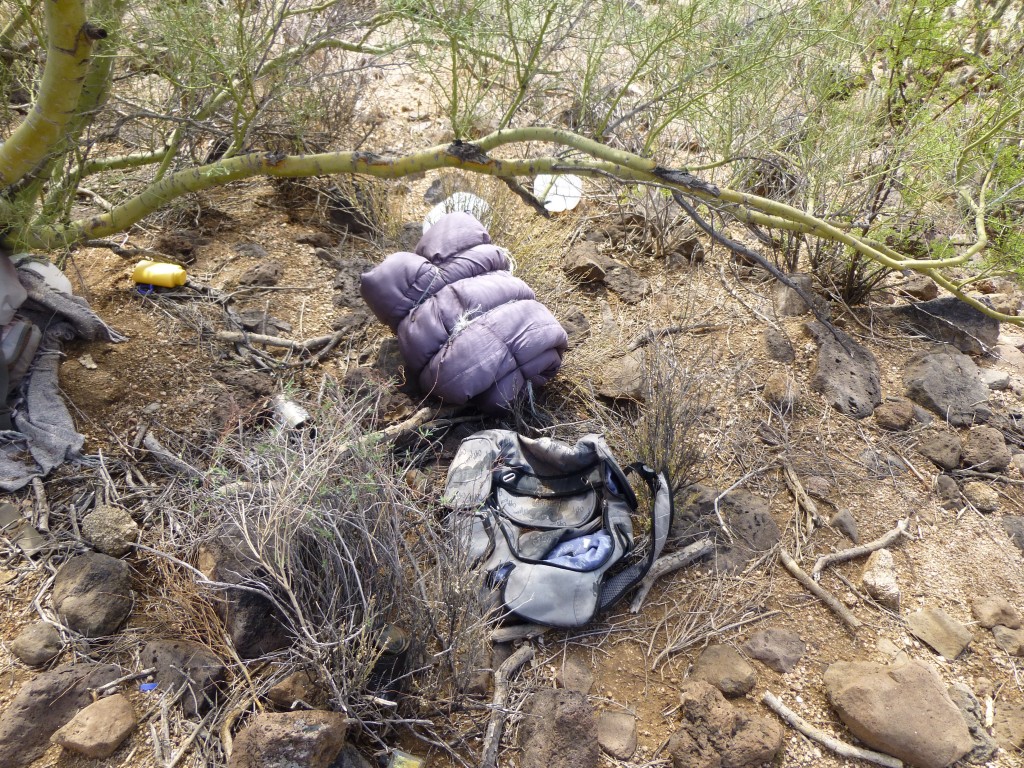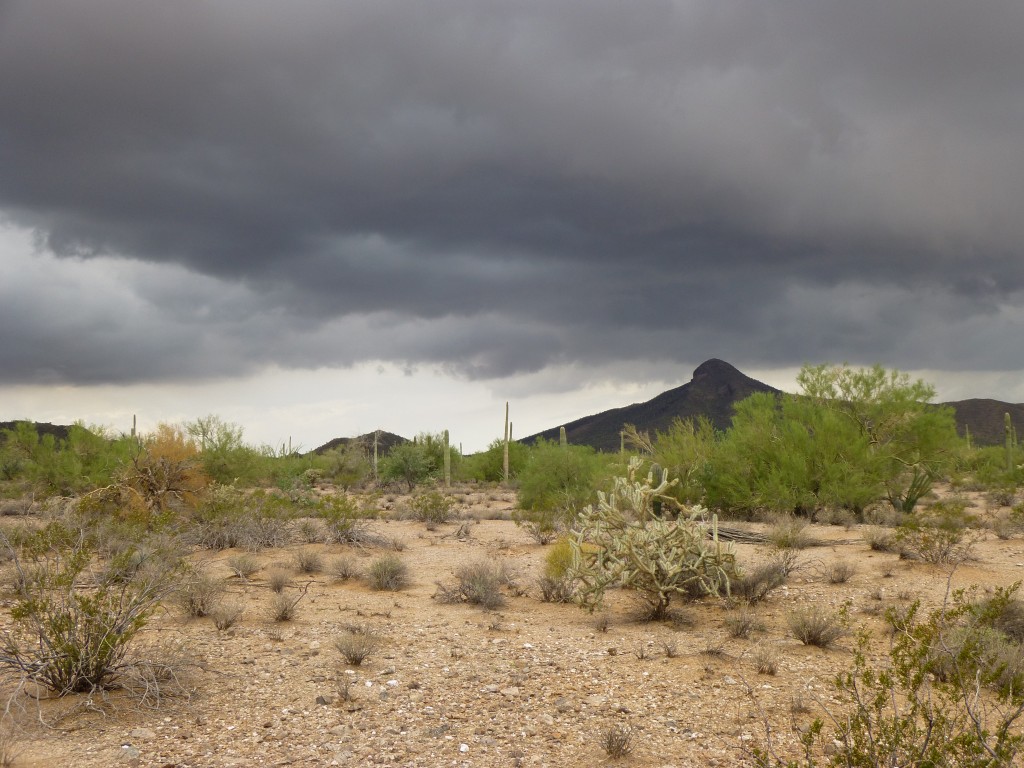It has been a long, hot summer here in the Sonoran desert, with recent temperatures in Tucson reaching 109 degrees F. a couple of times, 114 in Phoenix and 116 toasty degrees in Yuma. So when they forecast a high temperature of only 88 degrees a few days ago, I had to drop all other plans and go out climbing – it could be another two months before we have such a cool day again. I’m running out of peaks to climb close to home, so am forced to go farther afield. Even though it wasn’t going to be a hot day, it’s still important to start early, to minimize the chance of getting done in by the heat.
Driving north and then west on the freeways for about 80 miles, I exited at the Hidden Valley interchange. All that’s there is a gas pump, a bit of a convenience store and a small trailer park. I was expecting to just drive straight south from this little community into the desert, but, what the!!….. I had no sooner crossed a deep wash beside the store than I was stopped dead in my tracks by a massive locked gate. Two tall communications towers loomed just beyond, no doubt the reason for the locked gate, but knowing that didn’t help me any. Dang, what a drag to get stopped before I even began. Driving around for maybe 15 minutes found me another road farther west which, when I tried it, joined up with my first choice and bypassed the towers. I was encouraged by that, but as I drove south towards the mountains, I noticed that my engine was about to overheat.
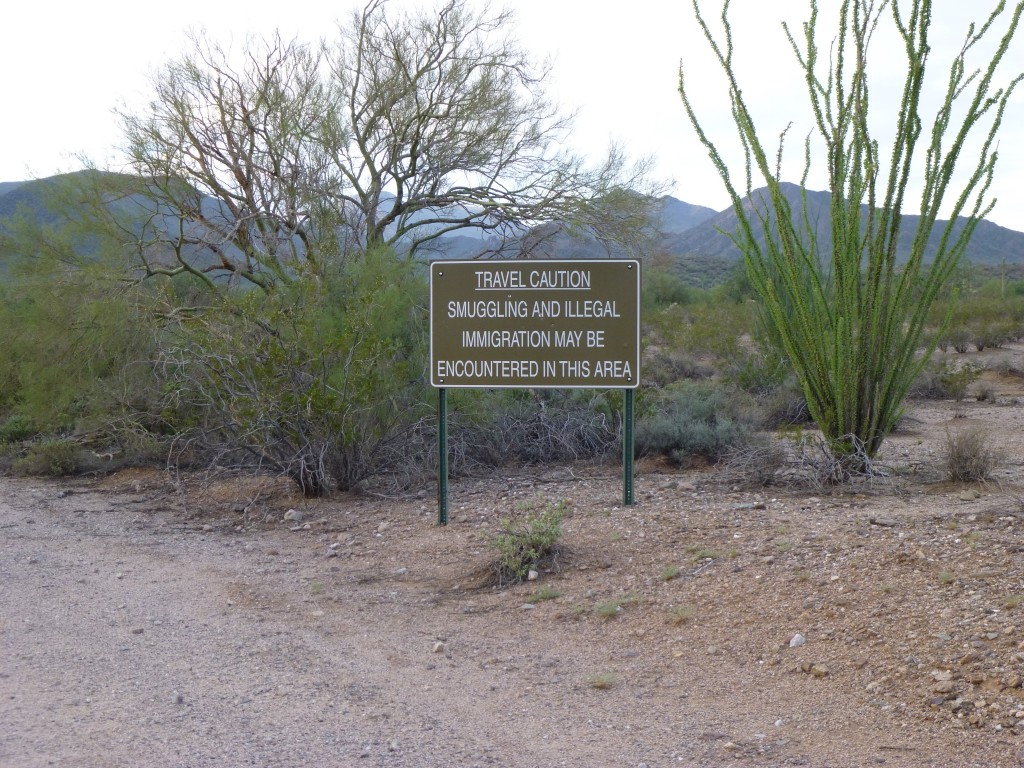 The topo map had shown that the road ended nice and close to the peaks I wanted to climb, but as the truck limped along, I was stopped by a long fence. A sign indicated that I had arrived at the edge of the Table Top Wilderness Area. So much for driving to the end of the road. Having to walk the portion of the road beyond the fence instead of driving it meant an extra 2 2/3 miles on foot. Oh well, nothing for it but to get ready and go. The weather had cooperated beautifully so far – it was completely overcast, with clouds so low they were hiding the mountaintops.
The topo map had shown that the road ended nice and close to the peaks I wanted to climb, but as the truck limped along, I was stopped by a long fence. A sign indicated that I had arrived at the edge of the Table Top Wilderness Area. So much for driving to the end of the road. Having to walk the portion of the road beyond the fence instead of driving it meant an extra 2 2/3 miles on foot. Oh well, nothing for it but to get ready and go. The weather had cooperated beautifully so far – it was completely overcast, with clouds so low they were hiding the mountaintops.
It was cool and clammy as I headed up the road. So far, so good – to be out there without the sun beating down for a change. Before long, I reached the end of the abandoned road. The clouds were dropping as I began the 1000-vertical-foot climb to the top of Peak 3132. For most of the ascent, the ceiling was pretty low, and at times I was enshrouded in mist.
The summit ridge was all socked in, a rare treat in the desert, which made for a mysterious final climb to the summit. Once there, I found a cairn with a summit register, which I expected. As I was getting ready to sign in, I did something really stupid. Standing on the flat summit, I mis-stepped on a rock and lost my balance as it rolled out from under my foot. Down I went, falling face-first. Luckily, I broke my fall with my left hand and leg, stopping my face from smashing into the rocks by a few inches. It hurt like hell, but I knew right away that nothing was broken.
My pride was hurt more than anything else. Stupid old fart! I was lucky it wasn’t jagged limestone that had broken my fall, instead of the forgiving weathered granite I had landed on. I signed in to the register, ate a snack and got ready to leave. As I started down the ridge, the mist parted and visibility improved, affording glimpses to the low desert below. I left the ridge and started down a series of gullies, heading west to my next objective. As I wound my way around each successive bend in the wash, it was exciting to see each new vista as it opened up. Much of the cloud cover had disappeared and the sun felt quite hot. By the time I had dropped the thousand feet, I spotted something ahead which caught me off guard.
Completely unexpected, I had come upon a metal barrier in the wash. It was made of heavy steel (it looked like old railroad track), welded together and set in deep concrete footings well below ground level. At about four feet in height, it completely spanned the wash, and was anchored in outcrop at each end. Homeland Security would have been the builder, and I knew in a heartbeat why it was there. I could see a well-worn vehicle track descending a steep hill into the wash, an impromptu road which had been used by smugglers. They would have driven pickup trucks or even cars through the desert, with their human or drug cargoes, through these low hills, staying away from the better-known roads. All this in an attempt to avoid detection by the Border Patrol. Once a barrier like this is in place, it’s way too much of a hassle for the smugglers to dismantle it, so they look for another way through. Sadly, these smugglers have created thousands of miles of their own impromptu roads, destroying so much pristine desert in the process.
After a brief rest, I headed uphill on the smuggler’s road, following it for perhaps a quarter of a mile, then leaving it and heading west through a low set of hills. I hadn’t gone far when I entered a hillside littered with the leavings of many undocumented immigrants. It was easy to see that this had been an encampment used by many. There were personal items scattered over a 200′-wide area, things such as water jugs, empty food cans, blankets, sleeping bags, cook-stoves, clothing, backpacks, plastic tarps, toiletry items, shoes and coke cans. What a mess! I am always leery when I approach a site such as this, fearing that I may find people still there – I’m not sure what they would do to a solo traveler such as myself. My guess is that if they saw me first, they would high-tail it out of there and it wouldn’t be an issue, but you never know. The Sonoran desert is the most highly-vegetated of all the world’s deserts, and someone could be hiding ten feet away from you and remain unseen. There was way too much stuff to show it all to you, but here are two pictures that give you the general idea.
Using the normal corridors of travel I know these folks would have used to get to this spot, about 115 miles would have been covered to get to this spot from the Mexican border. And that’s the distance on the map – it’s always farther in the real world on foot. That is a huge undertaking, no matter how you look at it, beyond the means of most people. Given the sketchy supplies of food and water they would have, it’s no surprise so many perish during the desert crossing. Also, it’s not likely they had any vehicular support to this point, as that would be the final means to take them to a safe house in Phoenix and their epic journey would then be over.
After checking this place out for a bit, I continued west, up the east slope of Antelope Peak. The sun was shining and even though the temperature was only in the eighties, the humidity made it feel quite hot. The thousand feet of climbing went pretty quickly, but something caught my attention off to the southwest in the direction of the Sand Tank Mountains. That range, twelve miles away across the Vekol Valley, a notorious drug-smuggling corridor, was completely obscured by thick dark clouds, and thunder from the storms there rolled non-stop. It was impossible to tell just yet if that weather was heading in my direction, but I thought I’d better get a move on just in case.
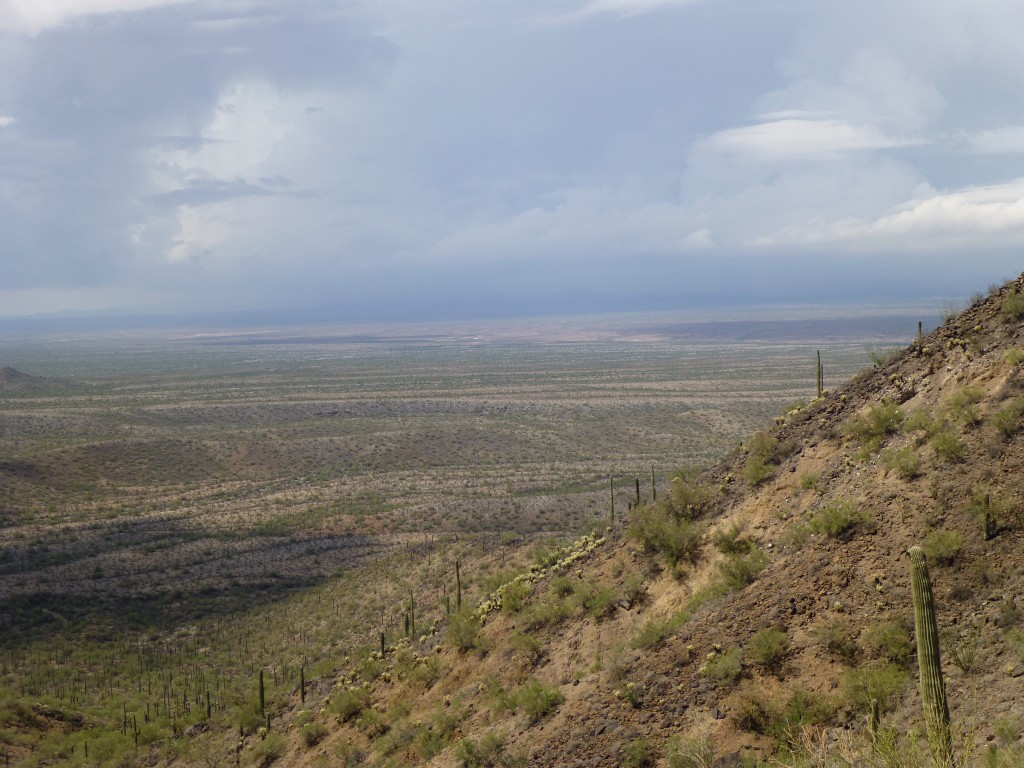 Just before 11:00 a.m. I made the summit. The wind was picking up and by now I knew that storm was heading right towards me. I didn’t spend much time looking for a register, and headed on down. Getting to the desert floor, a descent of 1,100 vertical feet, was easy enough, but then I had to go “across the grain” about two miles as the crow flies. Here’s what that means. In the desert, although it doesn’t rain much, over countless years any runoff will head downhill and will gradually erode channels in the desert floor. Where I was today, heading on foot from Antelope Peak back to my truck, my direction of travel was west to east. Here, however, water would flow downhill from south to north, so I had to cut directly across most of these small drainages at a right angle, forcing me to climb down into them and then out the other side. They were all small, some as shallow as three or four feet, but others were fifteen to twenty feet deep. Add them all up, and you may have a few hundred extra feet of climbing to do when all is said and done.
Just before 11:00 a.m. I made the summit. The wind was picking up and by now I knew that storm was heading right towards me. I didn’t spend much time looking for a register, and headed on down. Getting to the desert floor, a descent of 1,100 vertical feet, was easy enough, but then I had to go “across the grain” about two miles as the crow flies. Here’s what that means. In the desert, although it doesn’t rain much, over countless years any runoff will head downhill and will gradually erode channels in the desert floor. Where I was today, heading on foot from Antelope Peak back to my truck, my direction of travel was west to east. Here, however, water would flow downhill from south to north, so I had to cut directly across most of these small drainages at a right angle, forcing me to climb down into them and then out the other side. They were all small, some as shallow as three or four feet, but others were fifteen to twenty feet deep. Add them all up, and you may have a few hundred extra feet of climbing to do when all is said and done.
I finally reached the old road and had less than a mile to go. As I kept looking back over my shoulder, the sky was darkening, the thunder was booming and the storm was fast approaching. When I reached my truck, I had just enough time to top up my radiator before the rain arrived with a vengeance.
My timing had been perfect. It had taken just over five hours to cover the eight miles and 2,765 vertical feet. In the pouring rain, I drove back out to the interstate and then home to Tucson. Another fascinating day in the desert.
Please visit our Facebook page at https://www.facebook.com/pages/Desert-Mountaineer/192730747542690

